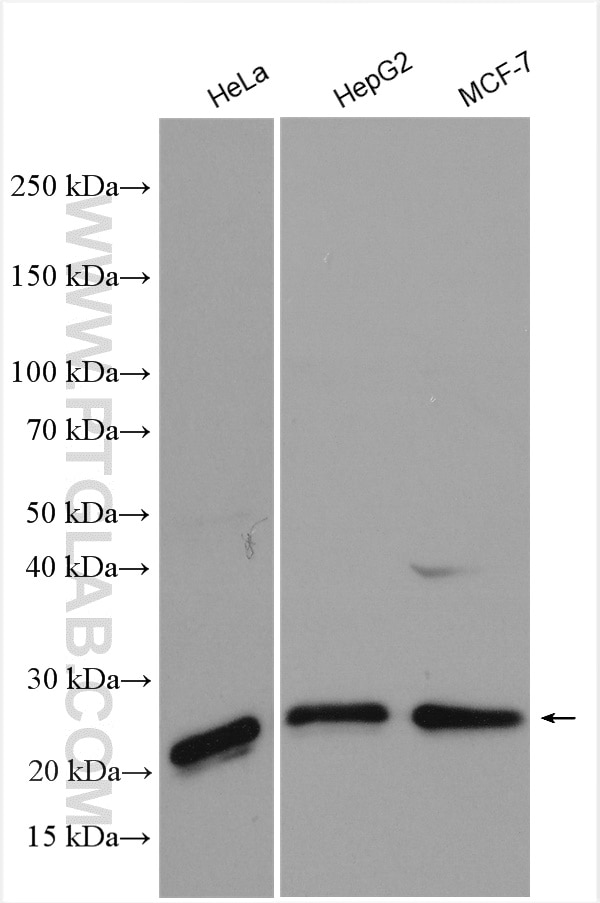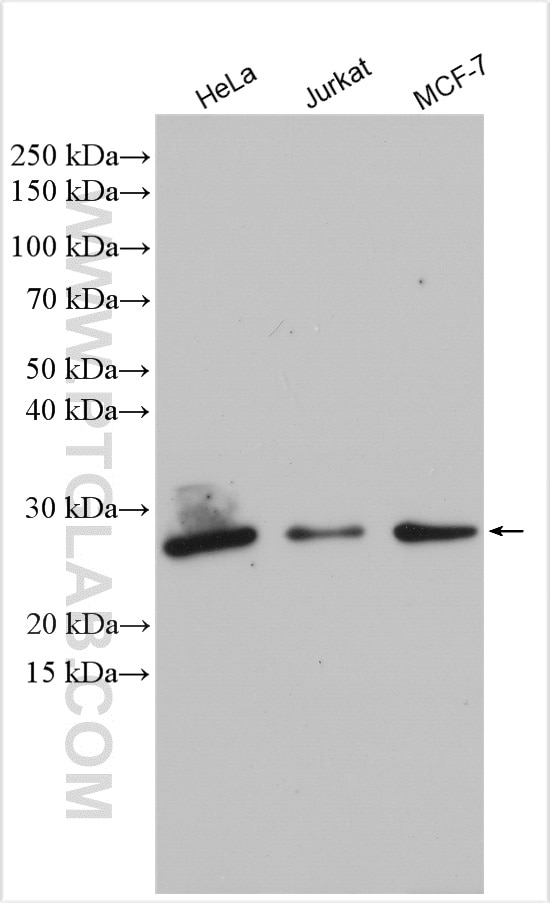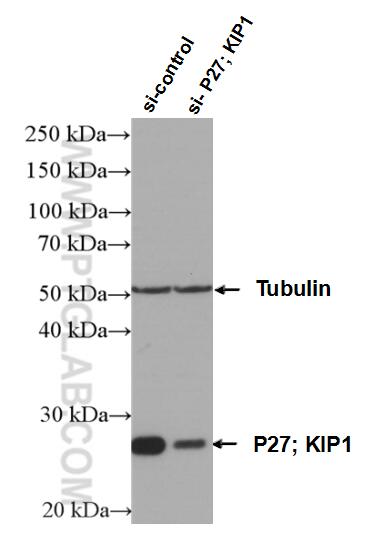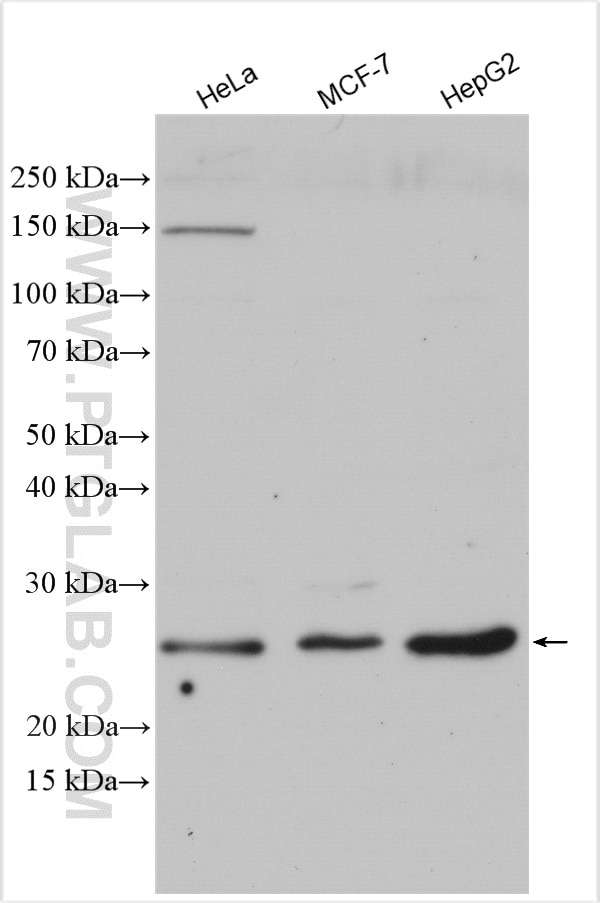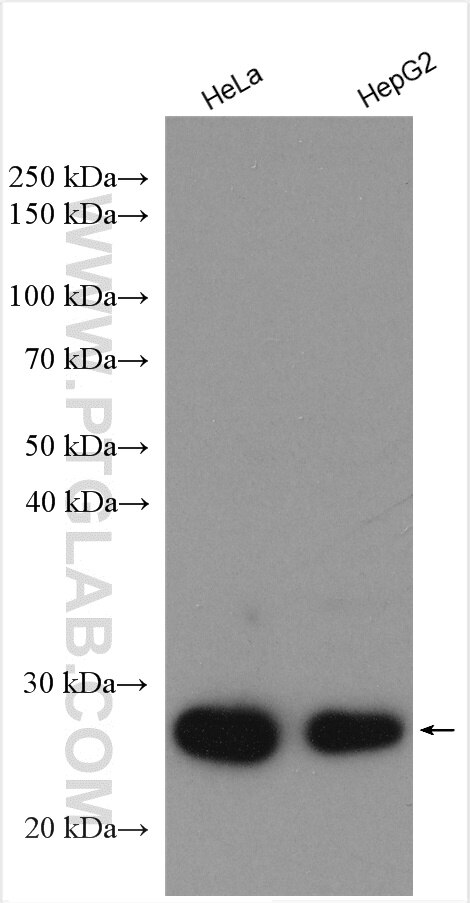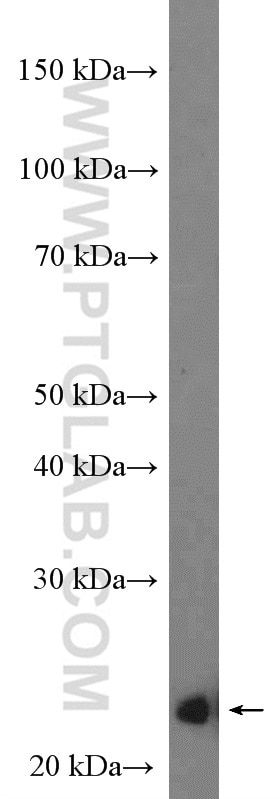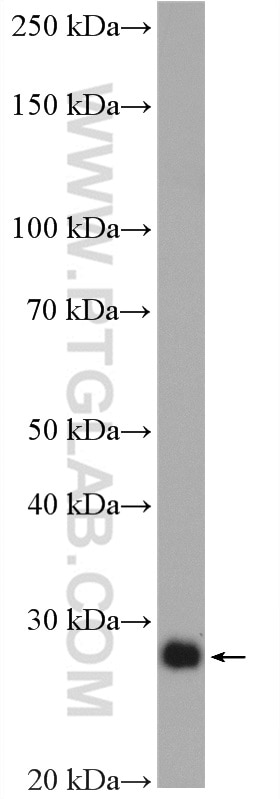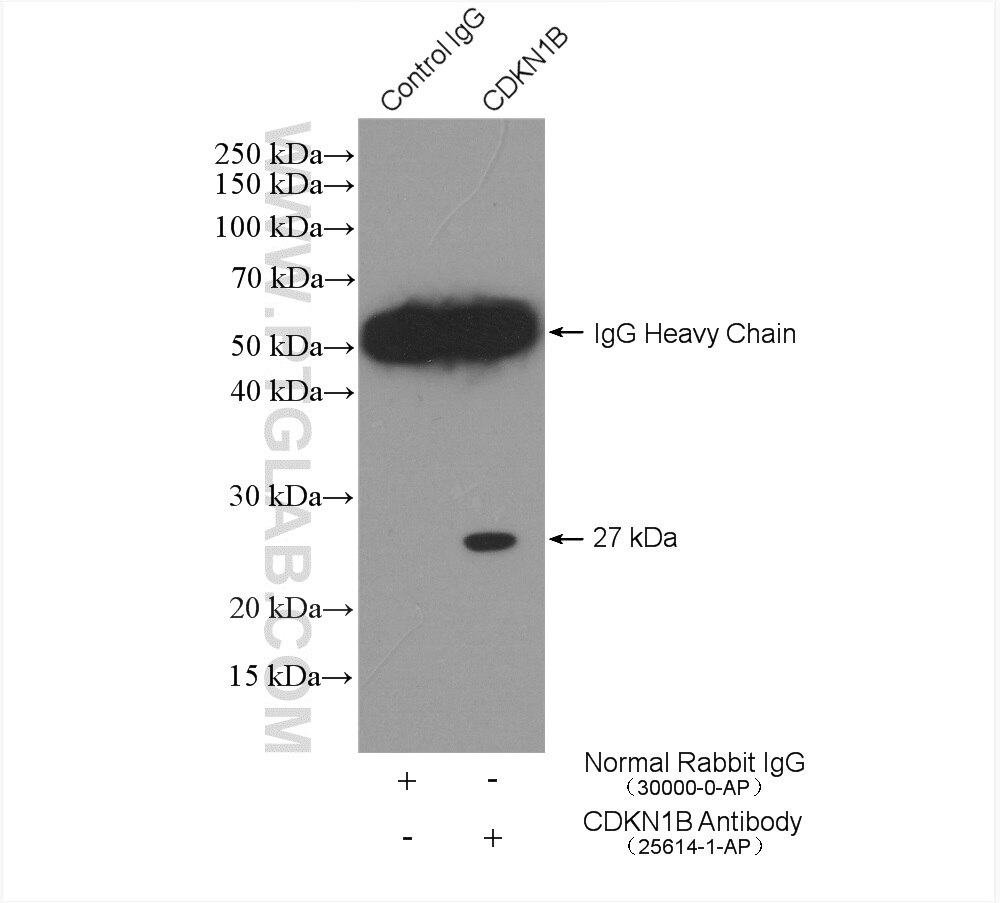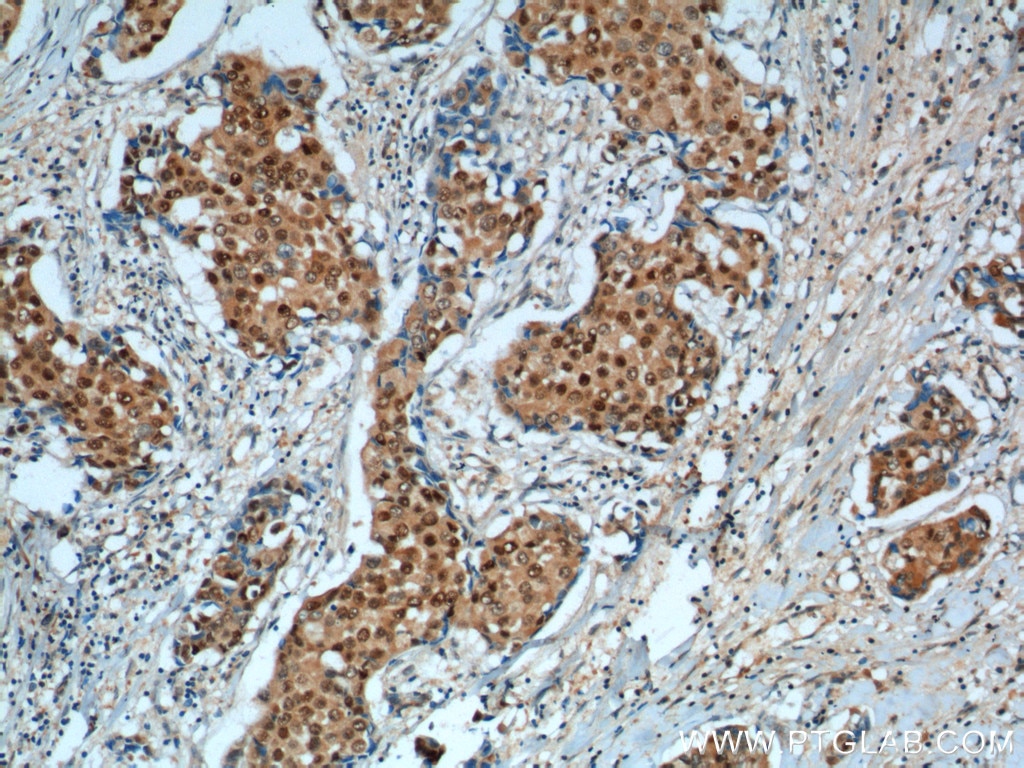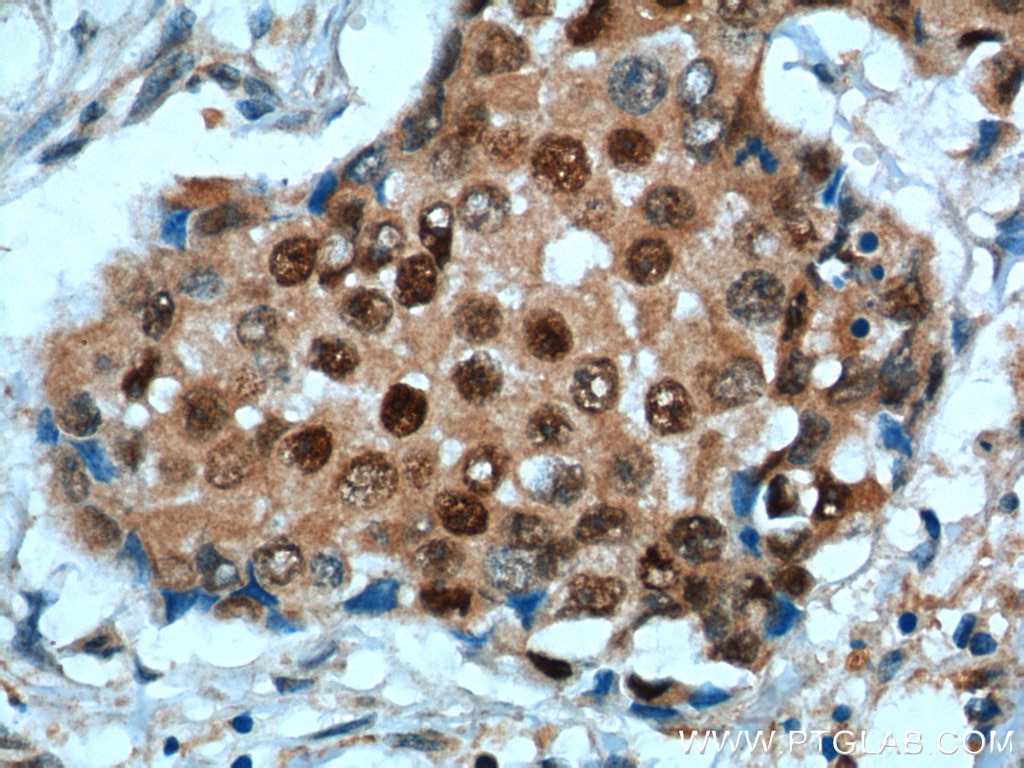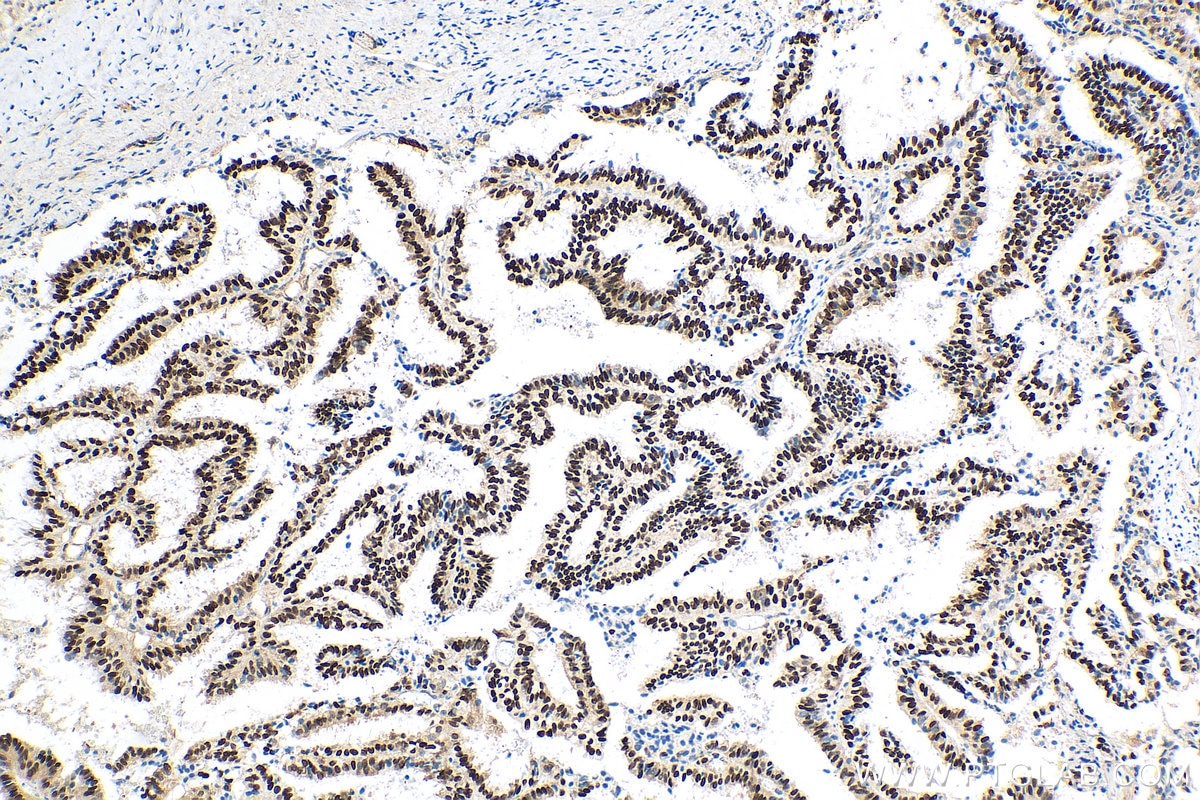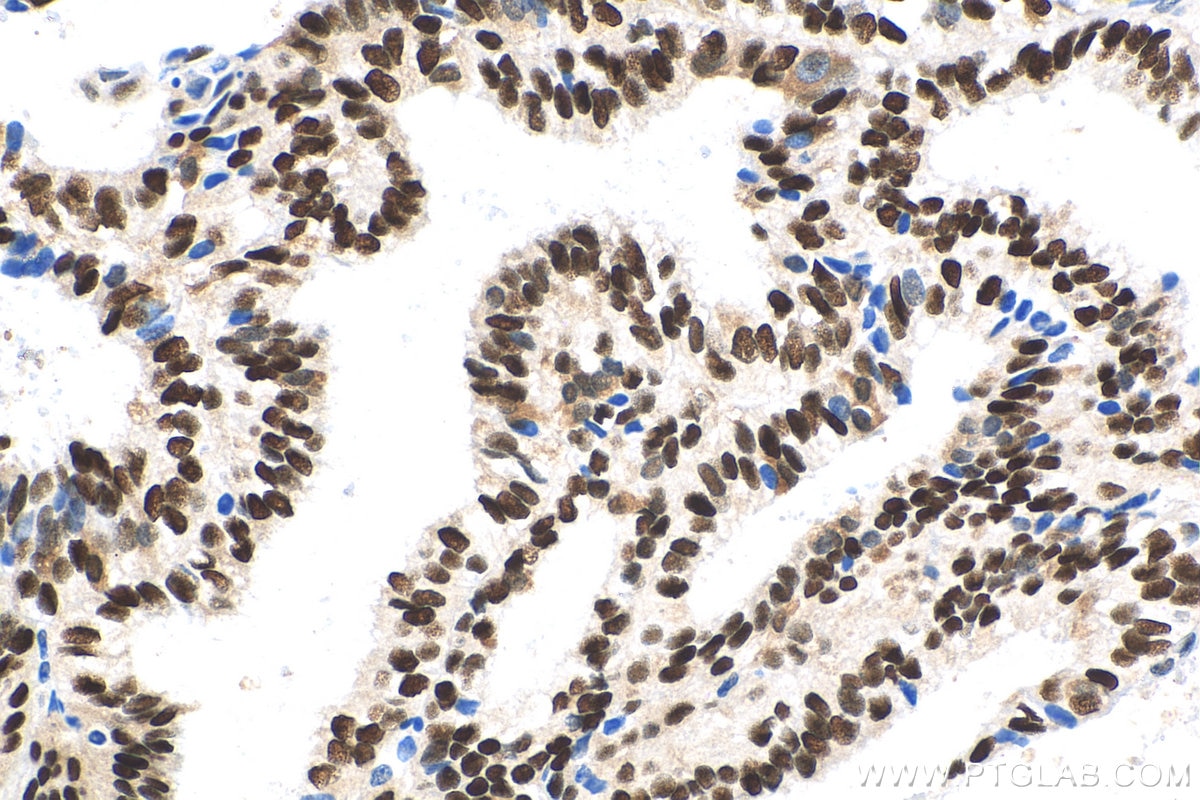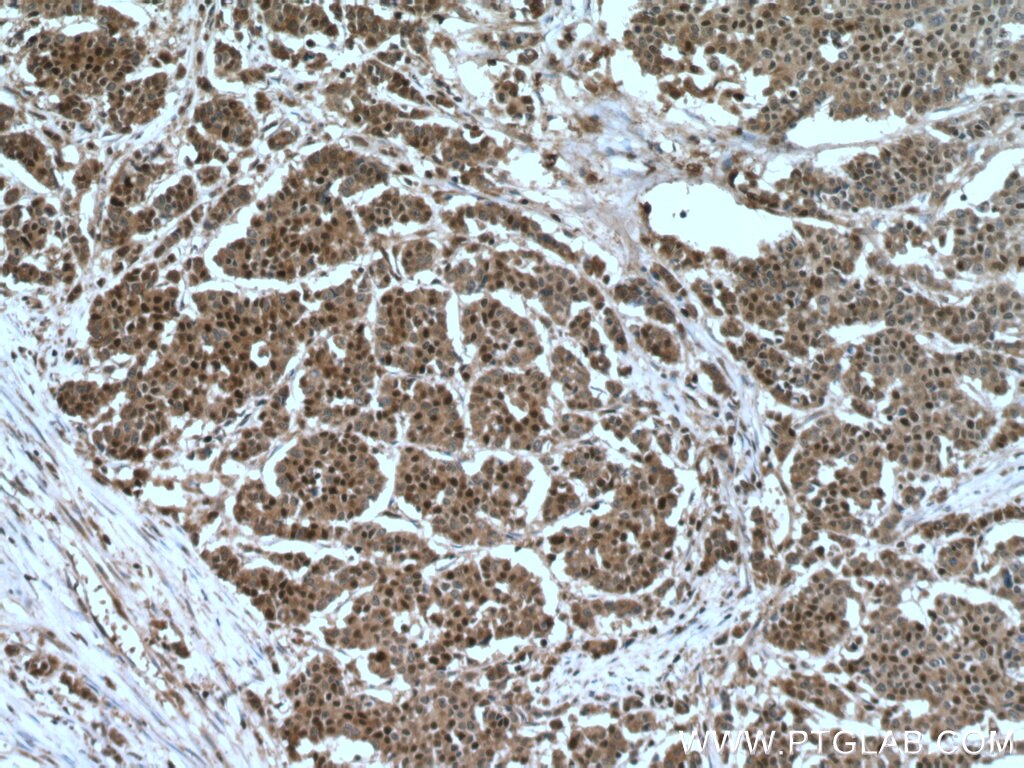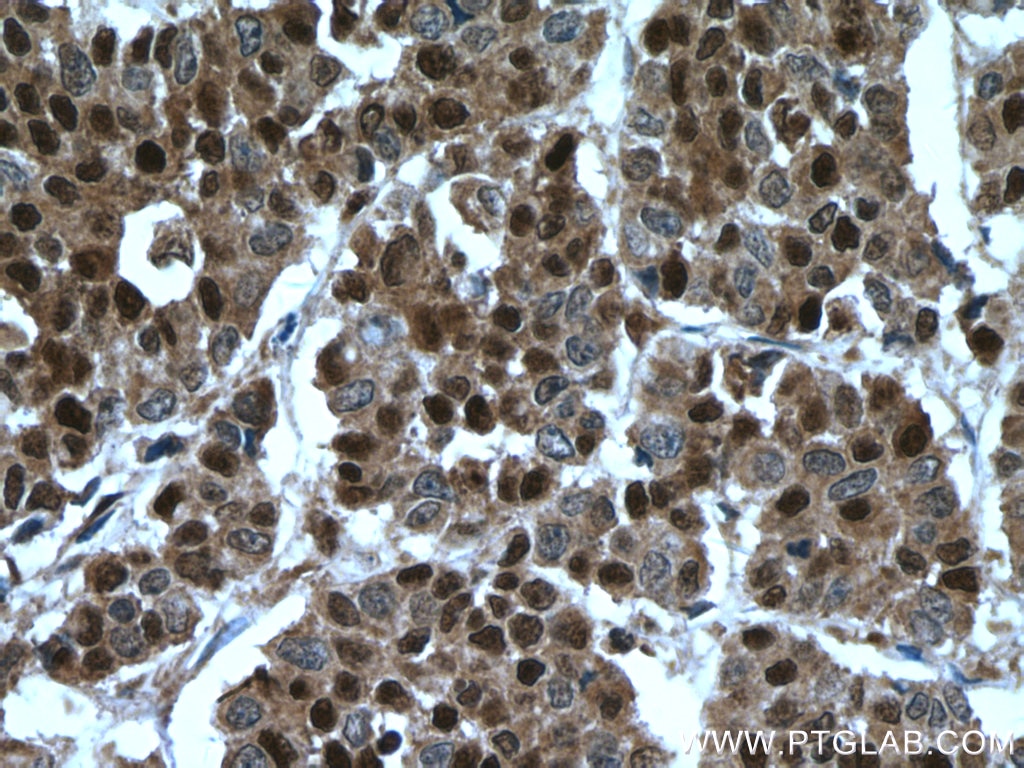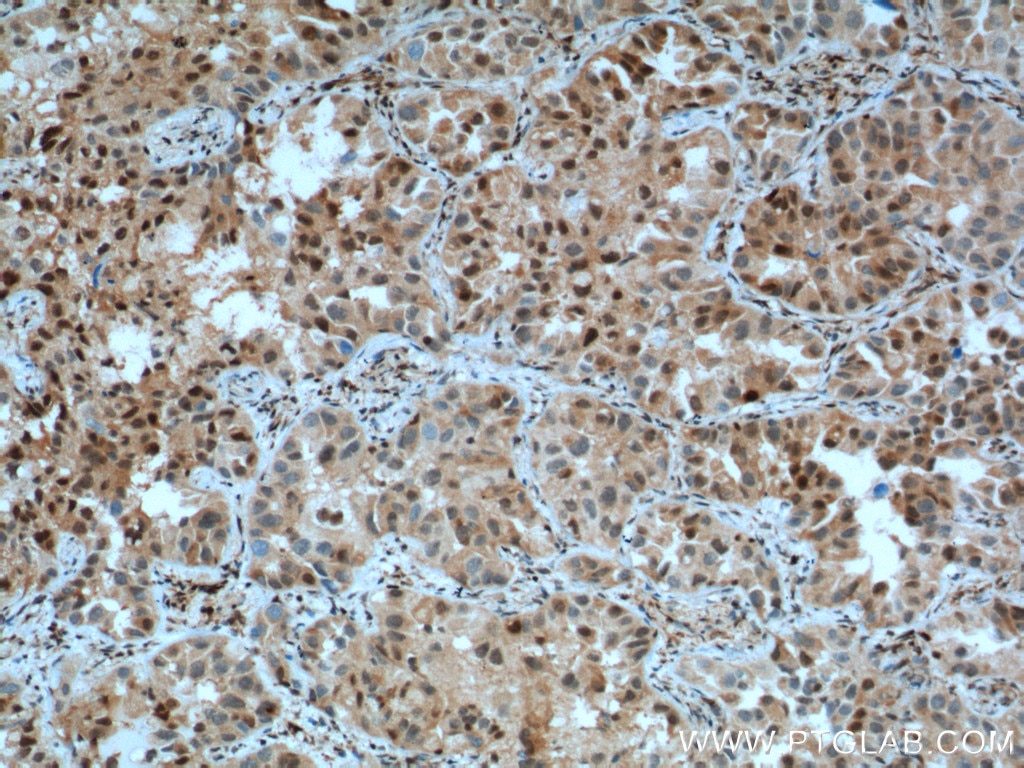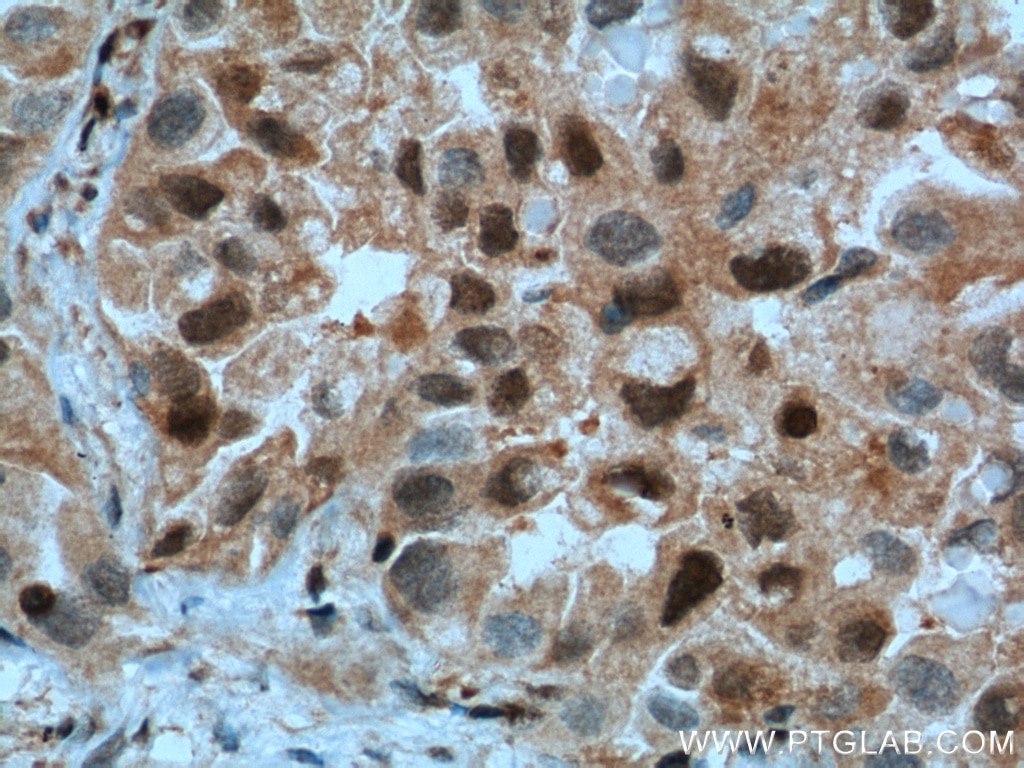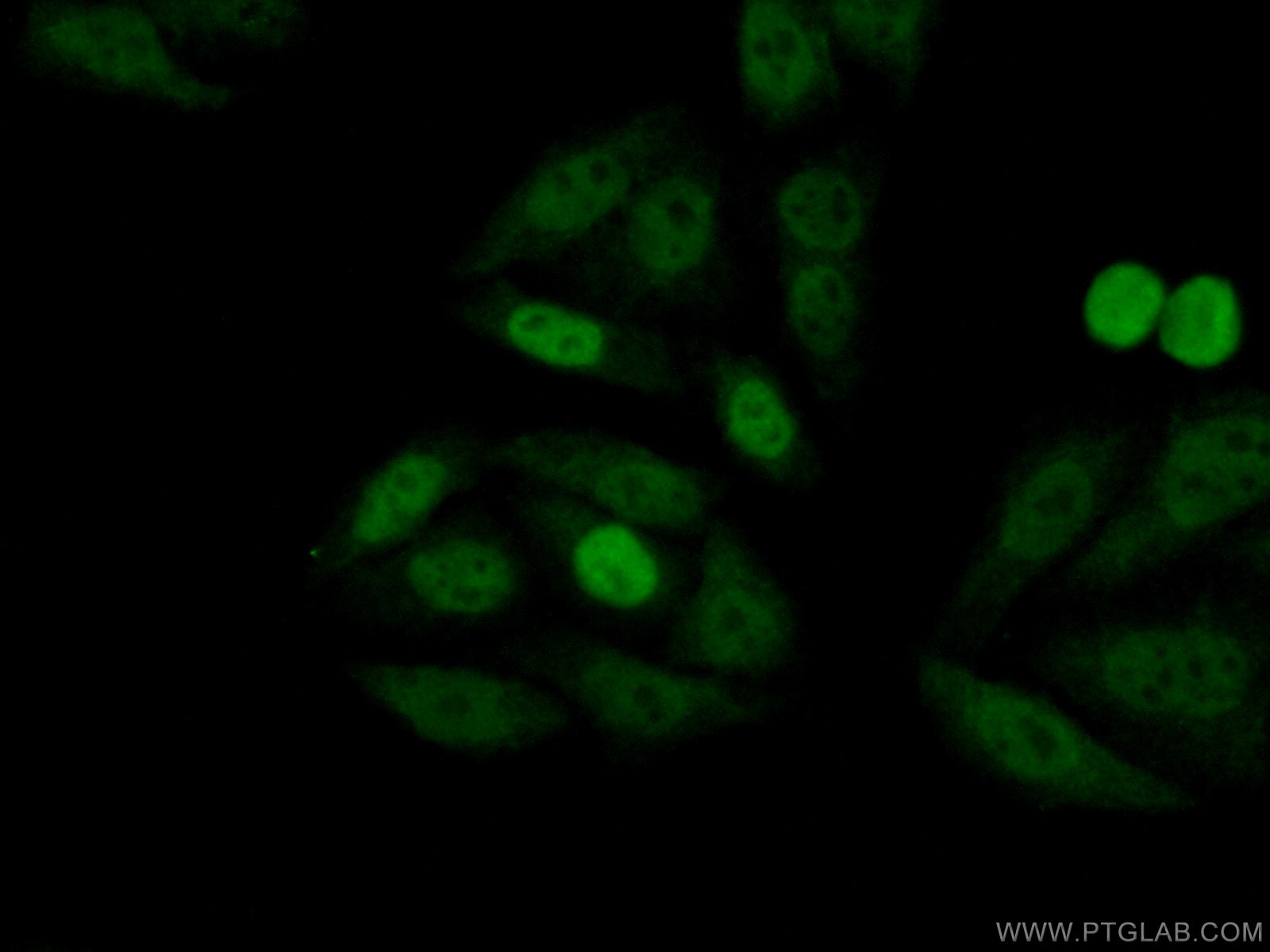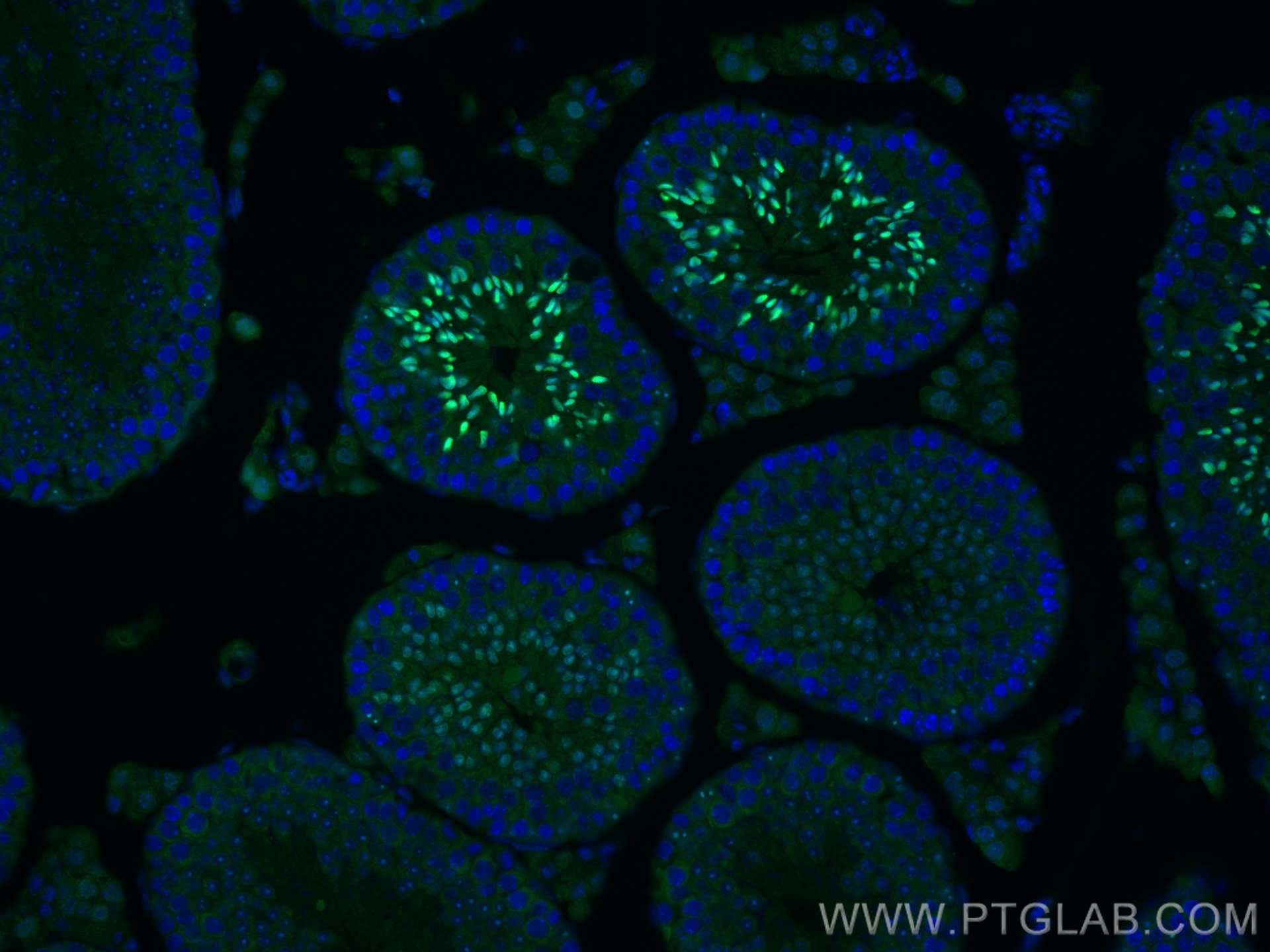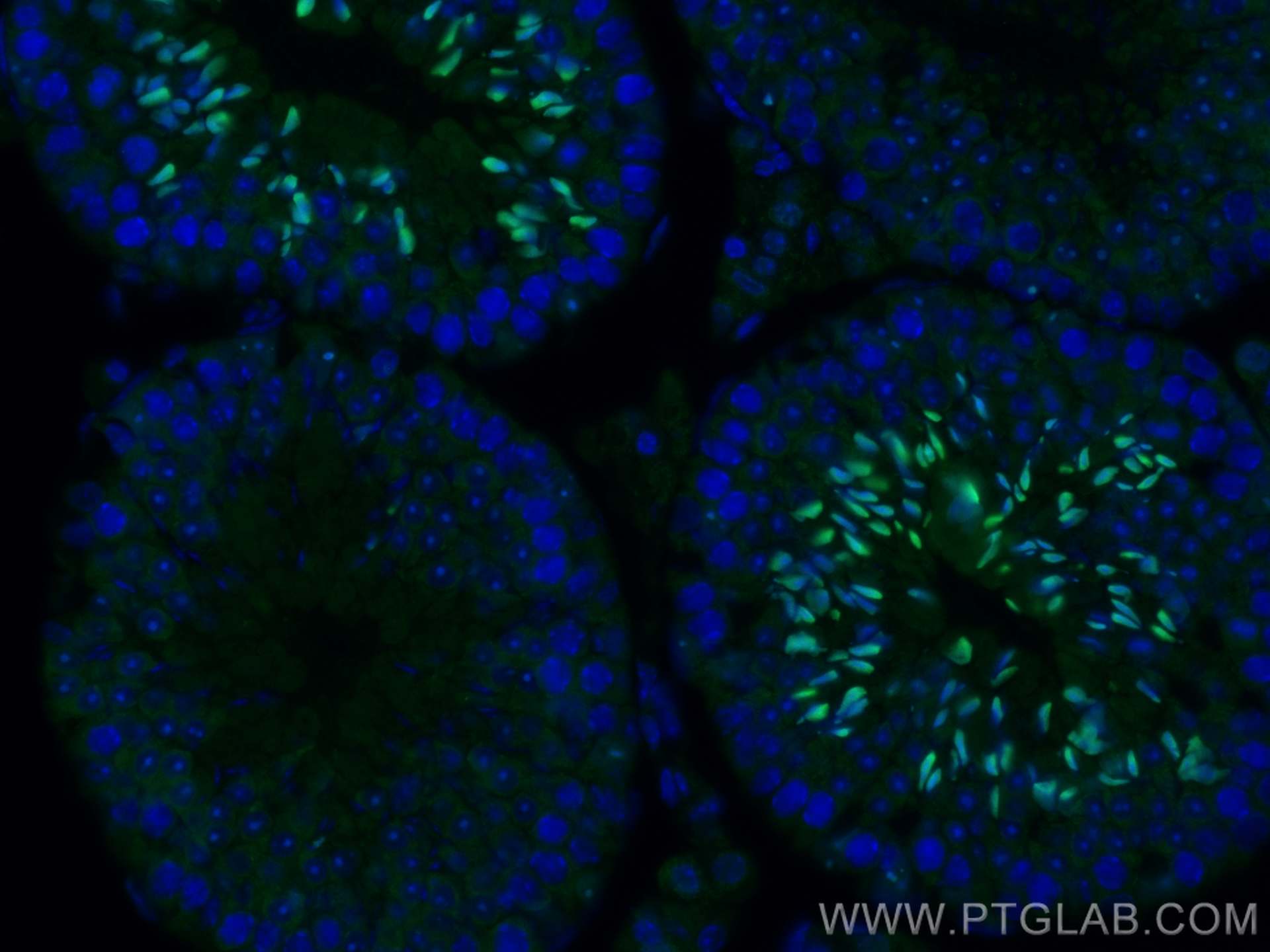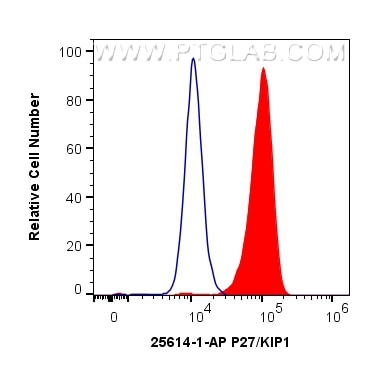- Phare
- Validé par KD/KO
Anticorps Polyclonal de lapin anti-P27; KIP1
P27; KIP1 Polyclonal Antibody for FC, IF, IHC, IP, WB, ELISA
Hôte / Isotype
Lapin / IgG
Réactivité testée
Humain, souris et plus (3)
Applications
WB, IP, IHC, IF, FC, CoIP, ELISA
Conjugaison
Non conjugué
180
N° de cat : 25614-1-AP
Synonymes
Galerie de données de validation
Applications testées
| Résultats positifs en WB | cellules HeLa, cellules HepG2, cellules Jurkat, cellules MCF-7, cellules NIH/3T3 |
| Résultats positifs en IP | cellules NIH/3T3, |
| Résultats positifs en IHC | tissu de cancer du sein humain, tissu de cancer du côlon humain, tissu de cancer du poumon humain, tissu de tumeur ovarienne humain il est suggéré de démasquer l'antigène avec un tampon de TE buffer pH 9.0; (*) À défaut, 'le démasquage de l'antigène peut être 'effectué avec un tampon citrate pH 6,0. |
| Résultats positifs en IF | cellules HepG2, tissu testiculaire de souris |
| Résultats positifs en cytométrie | cellules MCF-7, |
Dilution recommandée
| Application | Dilution |
|---|---|
| Western Blot (WB) | WB : 1:1000-1:8000 |
| Immunoprécipitation (IP) | IP : 0.5-4.0 ug for 1.0-3.0 mg of total protein lysate |
| Immunohistochimie (IHC) | IHC : 1:50-1:500 |
| Immunofluorescence (IF) | IF : 1:50-1:500 |
| Flow Cytometry (FC) | FC : 0.40 ug per 10^6 cells in a 100 µl suspension |
| It is recommended that this reagent should be titrated in each testing system to obtain optimal results. | |
| Sample-dependent, check data in validation data gallery | |
Applications publiées
| KD/KO | See 3 publications below |
| WB | See 173 publications below |
| IHC | See 14 publications below |
| IF | See 4 publications below |
| IP | See 2 publications below |
| CoIP | See 1 publications below |
Informations sur le produit
25614-1-AP cible P27; KIP1 dans les applications de WB, IP, IHC, IF, FC, CoIP, ELISA et montre une réactivité avec des échantillons Humain, souris
| Réactivité | Humain, souris |
| Réactivité citée | rat, bovin, canin, Humain, souris |
| Hôte / Isotype | Lapin / IgG |
| Clonalité | Polyclonal |
| Type | Anticorps |
| Immunogène | P27; KIP1 Protéine recombinante Ag22582 |
| Nom complet | cyclin-dependent kinase inhibitor 1B (p27, Kip1) |
| Masse moléculaire calculée | 198 aa, 22 kDa |
| Poids moléculaire observé | 27 kDa |
| Numéro d’acquisition GenBank | BC001971 |
| Symbole du gène | CDKN1B |
| Identification du gène (NCBI) | 1027 |
| Conjugaison | Non conjugué |
| Forme | Liquide |
| Méthode de purification | Purification par affinité contre l'antigène |
| Tampon de stockage | PBS avec azoture de sodium à 0,02 % et glycérol à 50 % pH 7,3 |
| Conditions de stockage | Stocker à -20°C. Stable pendant un an après l'expédition. L'aliquotage n'est pas nécessaire pour le stockage à -20oC Les 20ul contiennent 0,1% de BSA. |
Informations générales
CDKN1B, also named as P27 or KIP1, is a cyclin-dependent kinase inhibitor, which shares a limited similarity with CDK inhibitor CDKN1A/p21. P27 binds to and prevents the activation of cyclin E-CDK2 or cyclin D-CDK4 complexes, and thus controlling cell cycle progression at G1. The degradation of this protein, which is triggered by its CDK dependent phosphorylation and subsequent ubiquitination by SCF complexes, is required for the cellular transition from quiescence to the proliferative state. Downregulation of P27 has been implicated in the progression of several malignancies, including lung cancer, hepatocellular carcinoma, salivary cancer, oral squamous cell carcinomas, and gastric cancer.
Protocole
| Product Specific Protocols | |
|---|---|
| WB protocol for P27; KIP1 antibody 25614-1-AP | Download protocol |
| IHC protocol for P27; KIP1 antibody 25614-1-AP | Download protocol |
| IF protocol for P27; KIP1 antibody 25614-1-AP | Download protocol |
| IP protocol for P27; KIP1 antibody 25614-1-AP | Download protocol |
| Standard Protocols | |
|---|---|
| Click here to view our Standard Protocols |
Publications
| Species | Application | Title |
|---|---|---|
Gastroenterology Intestinal PPARα Protects Against Colon Carcinogenesis via Regulation of Methyltransferases DNMT1 and PRMT6. | ||
Cell Res DNA damage triggers tubular endoplasmic reticulum extension to promote apoptosis by facilitating ER-mitochondria signaling. | ||
Mol Cancer LncRNA TROJAN promotes proliferation and resistance to CDK4/6 inhibitor via CDK2 transcriptional activation in ER+ breast cancer. | ||
Mol Cancer CircGPR137B/miR-4739/FTO feedback loop suppresses tumorigenesis and metastasis of hepatocellular carcinoma. | ||
Small Synergistic Silencing of Skp2 by siRNA Self-Assembled Nanoparticles as a Therapeutic Strategy for Advanced Prostate Cancer. | ||
Cell Death Dis UBE2E2 enhances Snail-mediated epithelial-mesenchymal transition and Nrf2-mediated antioxidant activity in ovarian cancer |
Avis
The reviews below have been submitted by verified Proteintech customers who received an incentive forproviding their feedback.
FH Malak (Verified Customer) (04-22-2021) | The optimal incubation period is 1.5 hr at room temperature. Avoid incubating the antibody overnight as it may result in aspecific signals.
|
FH Susmita (Verified Customer) (09-17-2020) | Antibody is working very good for WB
|
FH Joshua (Verified Customer) (07-27-2019) | Cells fixed in 4% paraformaldehyde and stained at 4C overnight. Decent staining with some background in rabbit cells. Nuclear localization as expected.
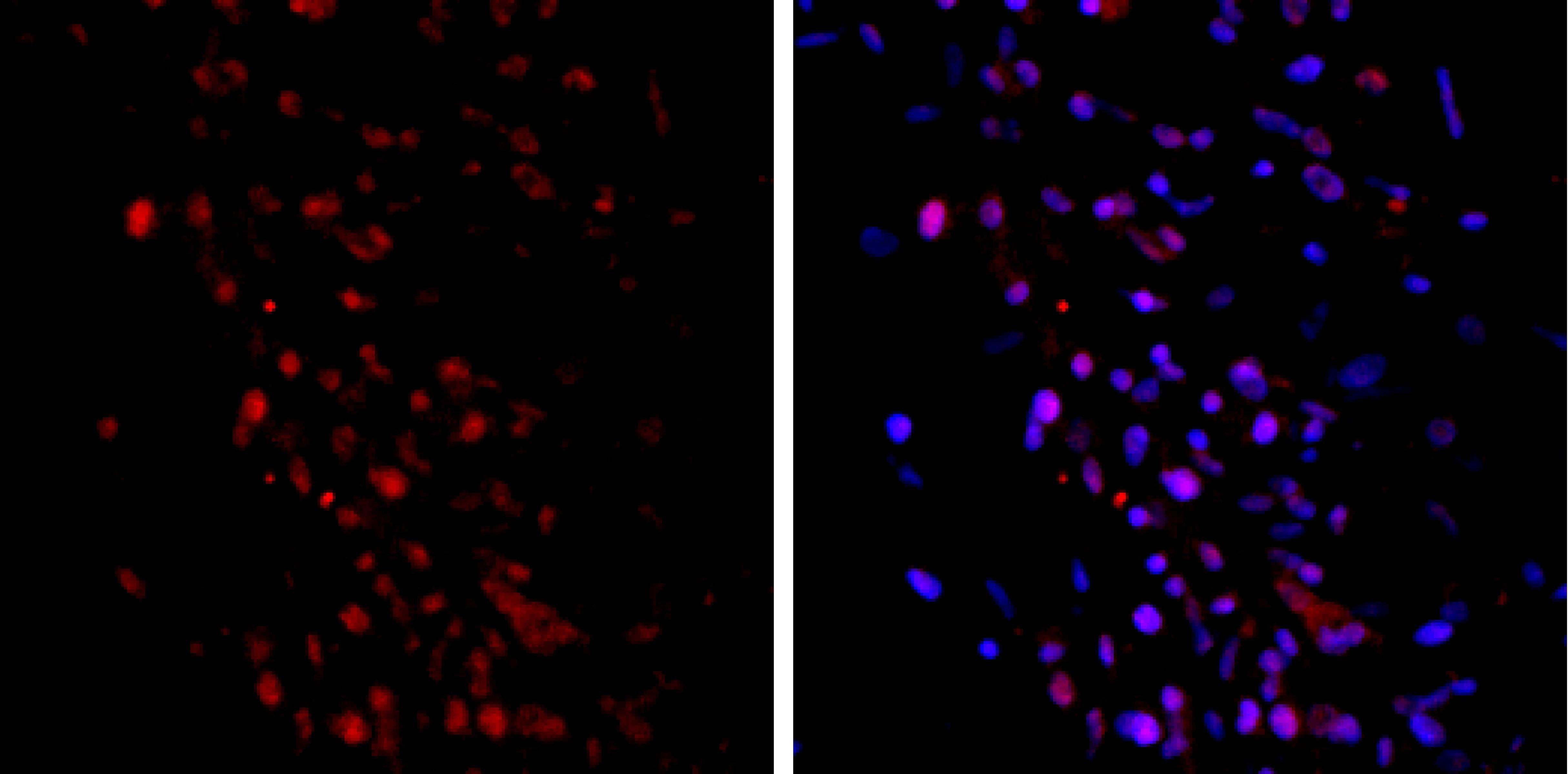 |
